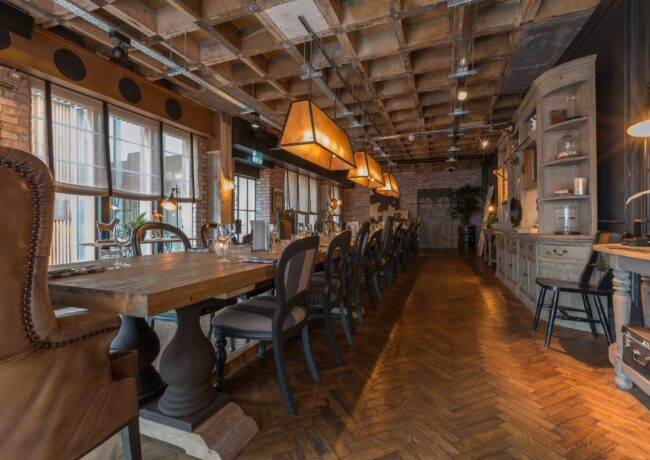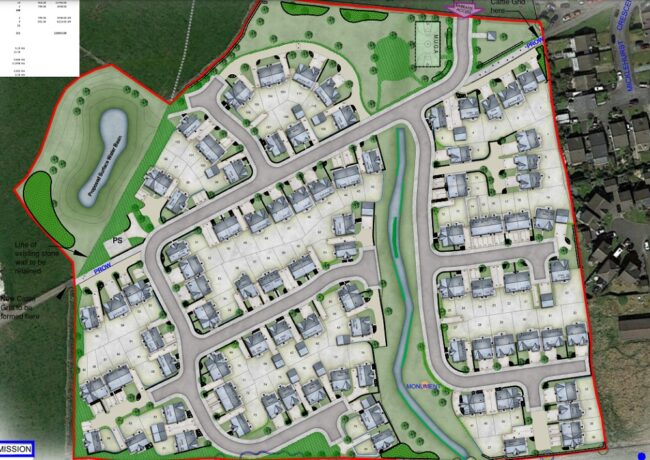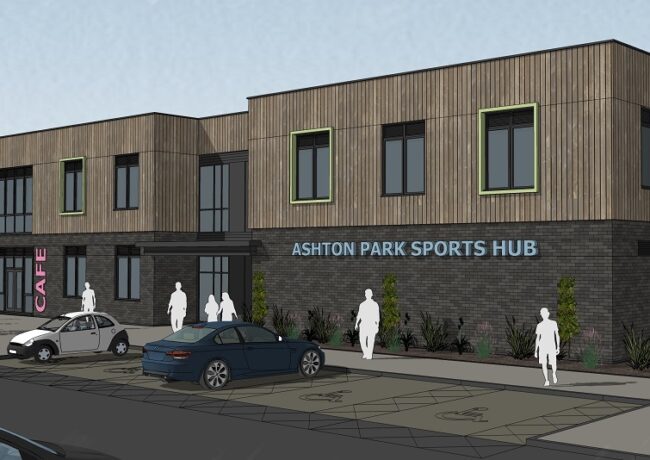RESOURCES | Why has PDR become the PRS buzzword?
We all know how instrumental social trends are in the shaping of our homes and expectations of our living environment, writes Ruth Lowe of Select Property Group. Now we’re seeing a generational shift in attitudes away from home ownership, which as you’d expect, has significantly changed the way many of us are choosing to live.
With many no longer equating home ownership to success, the number of 25 to 34-year-olds living in the private rented sector (PRS) has doubled in recent years. You’ll probably know them as either the ‘millennials’, ‘the social generation’ or ‘Generation Y’, but whatever the name they favour the flexibility that long-term renting affords their lifestyle. They value shared experiences and friendships, and recent research highlights their demand for living environments in which they meet and interact with lots of like-minded people.
This has challenged architects and designers to improve the supply of rented accommodation, delivering purpose-built communal amenity spaces with the aim of fostering friendships and providing the platform for the sense of community that Generation Y craves.
Such amenities include, gyms, movie rooms, lounges and perhaps most interestingly, private dining rooms (PDR), a space which I’m pretty sure will mark a significant change in the dynamics of social interaction within modern homes.
The appeal of the PDR
On paper, or on a listing site let’s say, PDRs immediately allow the apartment to be perceived as a premium, purpose-built product; it’s become a bit of an architectural buzz word. But for long-term tenants the appeal of the PDR extends far beyond the gravitas of having a shared stake in a PDR.
Private dining rooms offer tenants the best of both worlds. With the flexibility and freedom to entertain large groups of friends outside the smaller confines of their apartment, tenants are able to access a premium entertainment space as and when they need it. With the use of such facilities included in the rent, tenants find their value for money is considerably greater than if they were to pay a substantially higher rent for additional smaller entertainment space within their own apartment.
Not a box-ticking exercise: what makes a good PDR?
In theory, it’s very easy to retrofit a communal dining space into a development and pass it off as a PDR. In reality though, unless the design of the room is thoroughly considered based on its ultimate purpose and the needs of its occupants, the space will likely contribute very little to the overall tenant experience.
So, what exactly distinguishes good PDR design from bad?
Many of you will automatically assume the best private dining rooms are those that look the most ‘flashy’ and highly spec’d. I promise you that this isn’t necessarily the case. Sure, state-of-the art appliances and high-end finishes are pleasing, but if the architectural fundamentals aren’t correct, the space will lack ambience and atmosphere. Basically, it won’t function as it should and the community-based living environment that build-to-rent needs will not be achieved.
The best PDR developments take into account the following design considerations:
Natural light
One of the most important elements in architecture, sunlight can transform a blank box to joyful space.
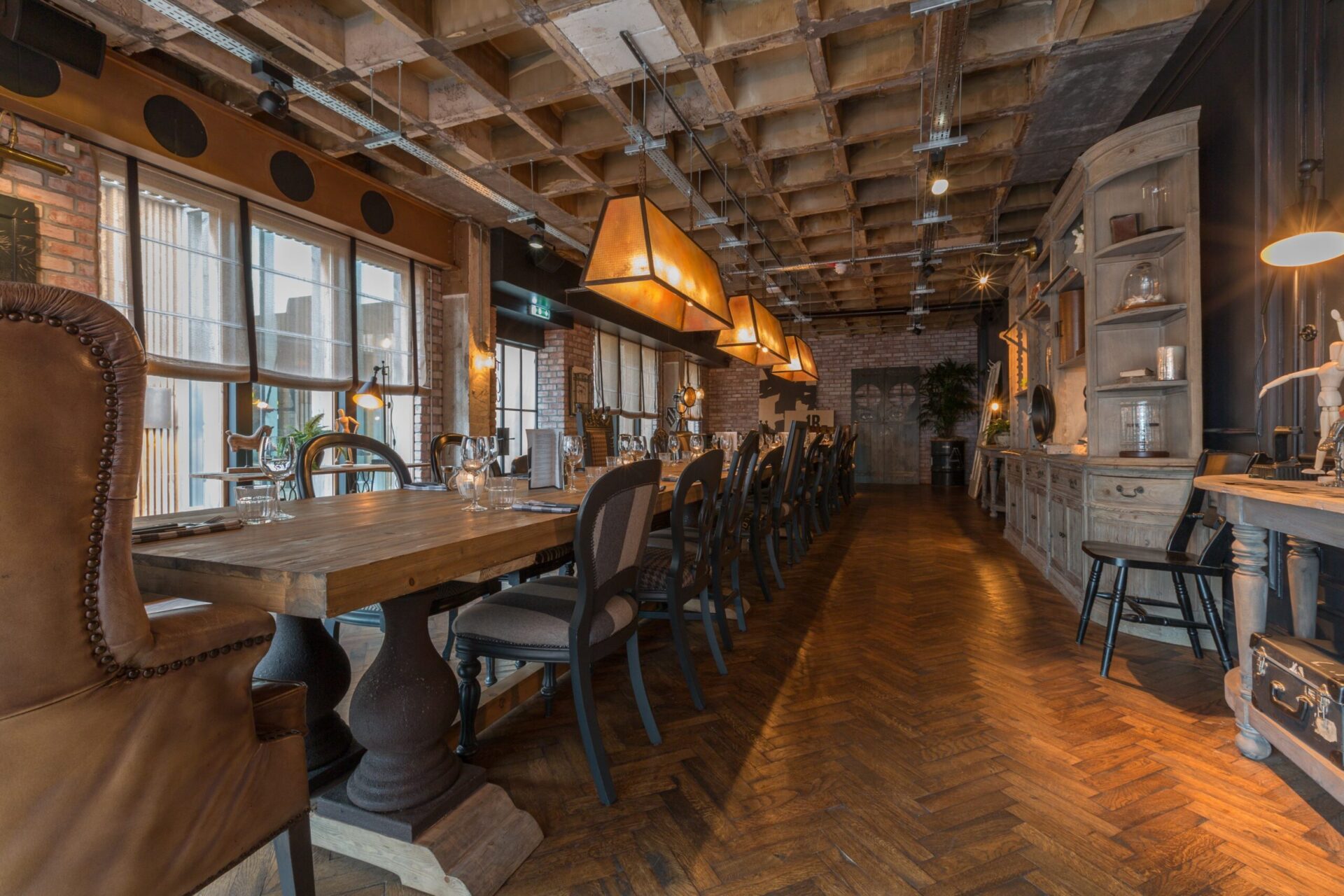
Restaurant examples: The Gallery, Artisan. Manchester
Key proportions
This is a tricky one! The room needs to have an air of grandeur and a sense of occasion, yet still feel intimate and cosy. The proportions of the room subconsciously effect the way a person feels within a space and the room should be of appropriate size and scale to the number of seats at the table.
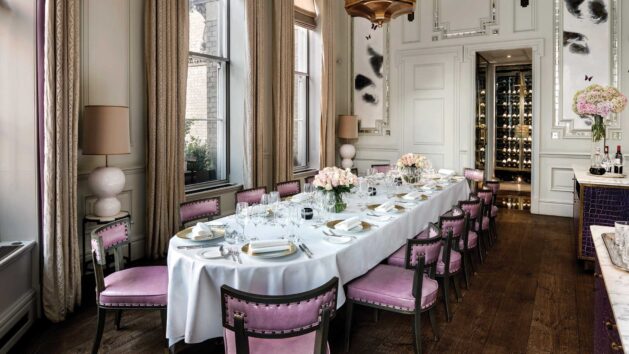
Restaurant examples: Private dining by Roux, Langham. London
Acoustics
It is important that the space offers good acoustics, so that a large group of dinners can converse easily. A social space becomes pretty redundant if it’s difficult to hear what people are saying.
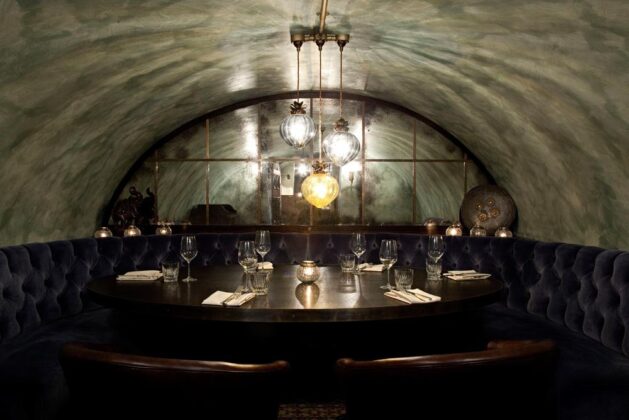
Restaurant examples: Gymkana. Mayfair
The Wow factor
The desirability of PDRs is that you have the use of an area far superior to the space that could be provided within each tenant’s private apartment. The backdrop of the city skyline can provide that ‘wow factor’ and an impressive private balcony or terrace for those pre-dinner drinks (PDDs!) is a sought-after commodity in the city centre.
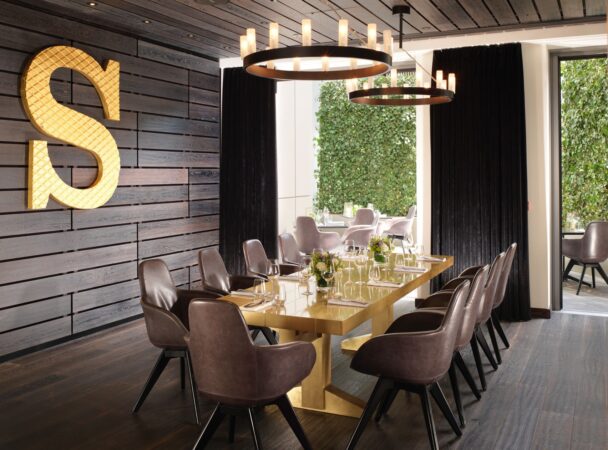
Restaurant examples: The Sea Containers Restaurant, Mondrian. London
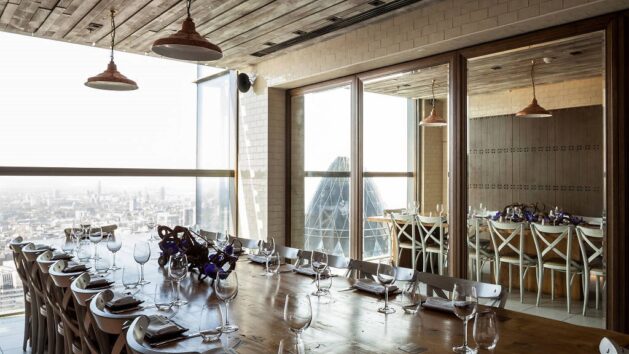
Restaurant examples: Duck and Waffle. London
Summary
For years, the kitchen has been considered the nucleus of the family home. Over the last decade the modern family has adopted an open plan approach to living, knocking down walls or extending to create one large central space in which to cook, live and entertain.
Now, as the next generation of would-be homebuyers opt to rent apartments in the city, rather than buying a house in the suburbs, we find ourselves entering a new era of housing, one which I expect will see the PDR serve as the nucleus of these new types of homes.
This article was originally published through Place Resources


